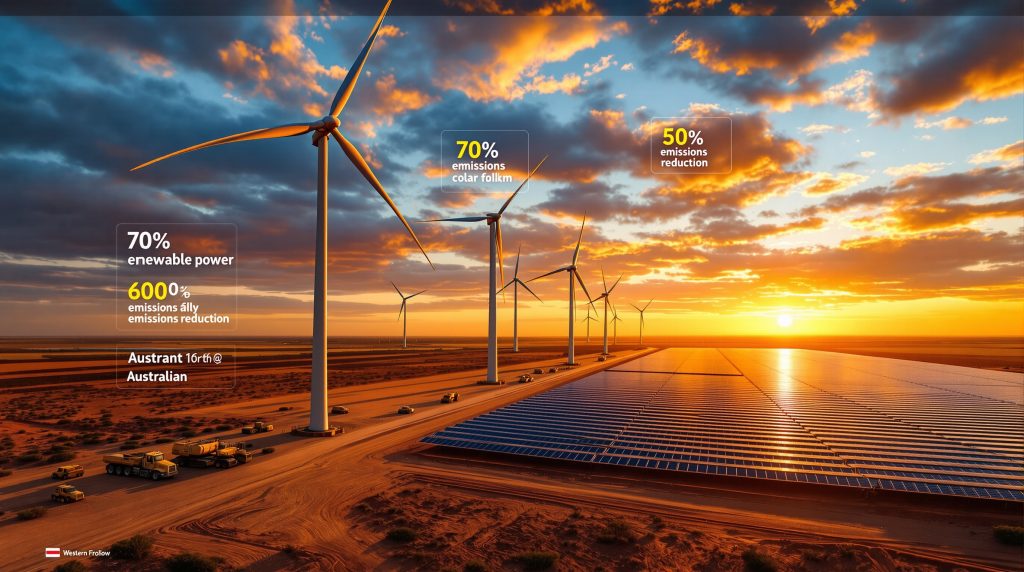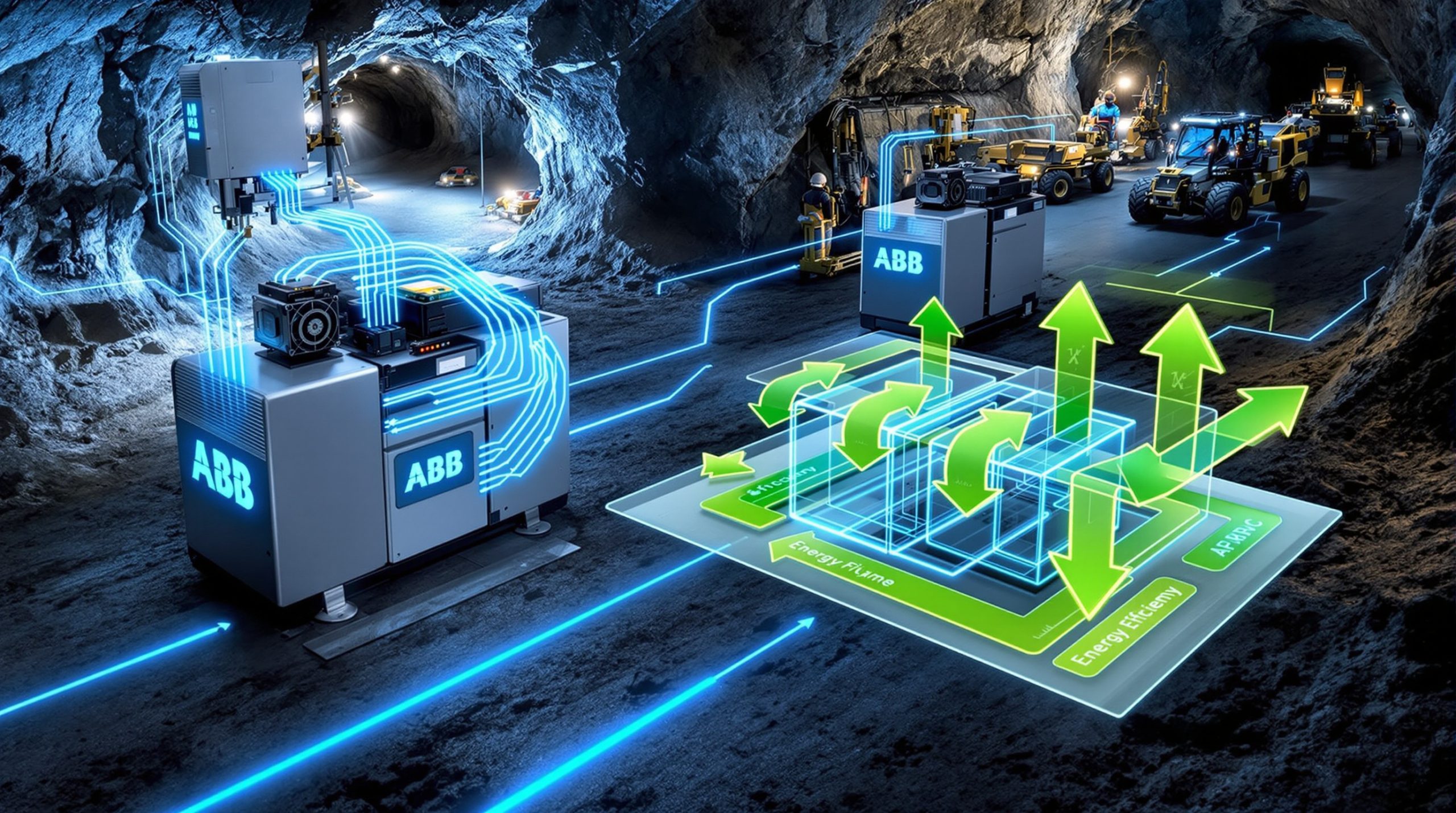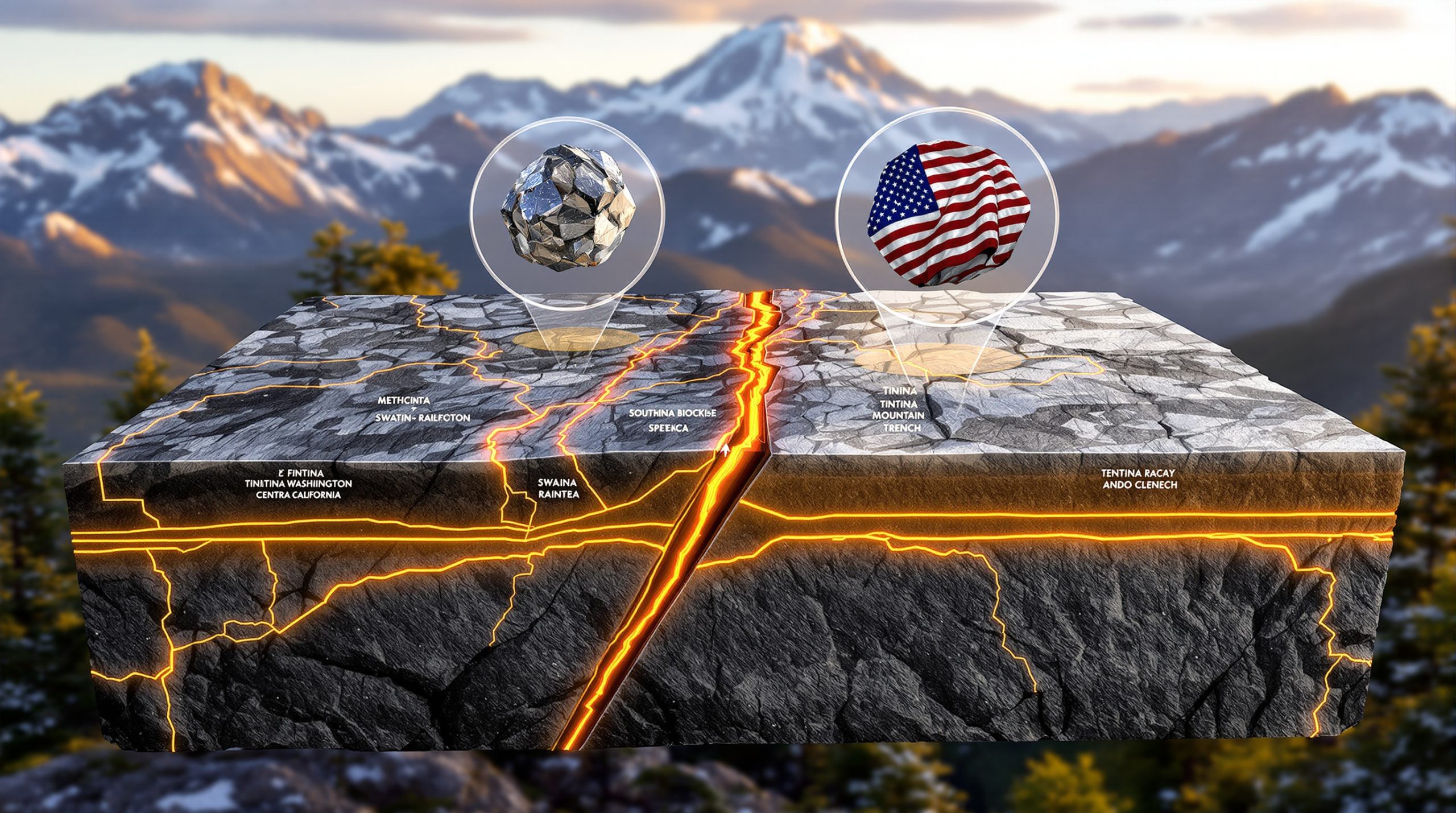Gold Fields' St Ives Renewable Energy Project: Transforming Mining Through Sustainable Power
The St Ives Renewable Energy Project represents a landmark AUS$296 million investment by Gold Fields to revolutionize power generation at its Western Australian gold mining operations. Located 80 kilometers south of Kalgoorlie, this ambitious initiative combines wind and solar technologies to create Western Australia's largest renewable energy system at an existing mine site, showcasing how traditional resource extraction can transition to more sustainable mining transformation.
Project Scale and Components
The scope of this renewable energy initiative is impressive, with two primary power generation systems working in tandem:
- A 42MW wind farm featuring 7 advanced wind turbines
- A 35MW solar installation spanning 2.5km²
- Combined systems designed to supply over 70% of the St Ives mine's electricity needs
- Infrastructure projected to reduce the mine's carbon emissions by approximately 50% by 2030
- Construction progressing on schedule for full operational status in early 2026
The project's strategic location takes advantage of Western Australia's abundant renewable resources, utilizing both wind and solar potential to maximize generation capacity throughout the day and night cycles.
Strategic Importance for Mining Sustainability
This pioneering project serves as a potential blueprint for the mining industry evolution, demonstrating how large-scale operations can significantly reduce their environmental footprint while maintaining production efficiency. The initiative aligns with growing investor and regulatory expectations for mining operations to reduce carbon emissions while maintaining competitiveness in global markets.
By implementing this hybrid renewable energy system, Gold Fields is positioning itself at the forefront of sustainable mining practices in Australia, creating a model that could influence industry standards for years to come.
How Does the Wind Farm Component Work?
The wind farm represents a critical element of the hybrid renewable energy system, with significant engineering and logistical challenges involved in its implementation. Recently, a major milestone was reached with the arrival of seven wind turbines at Geraldton Port, marking a tangible step forward for the project.
Wind Turbine Specifications and Installation
The wind farm's technical specifications highlight the scale of this engineering achievement:
- Seven massive turbines with 80-meter blades, each weighing over 24 tons
- Combined blade length of approximately 1.7 kilometers if placed end-to-end
- Substantial concrete foundations (800m³ per turbine) completed in mid-2025
- Total cargo weight exceeding 2,000 tonnes for all turbine components
The foundation work represents a significant engineering achievement, with each of the seven concrete foundations containing 800m³ of concrete to provide stable support for these massive structures. These foundations were completed ahead of the components' arrival, showcasing the careful project planning and execution.
Logistical Achievements
The transportation logistics for this project represent a remarkable achievement in their own right:
- Components arrived at Geraldton Port in September 2025
- Transportation plan covering over 1,000 kilometers by road to the St Ives site
- Specialized handling requirements implemented for the oversized components
- Carefully coordinated route planning through Mid West and Goldfields communities
- Staggered haulage managed by RJA Engineered Transportation over approximately two months
The transportation route follows the Geraldton-Mount Magnet Road, Mount Magnet-Leinster Road, and Goldfields Highway, giving local communities a unique opportunity to witness these massive components as they make their journey east-south-east to the project site.
What Makes the Solar Farm Component Unique?
Complementing the wind installation, the solar farm provides daytime generation capacity and helps balance the overall renewable energy system. This dual-technology approach represents a sophisticated solution to the challenge of providing consistent renewable energy to power-intensive mining operations.
Solar Array Design and Implementation
The solar component of this renewable energy initiative features:
- A 35MW solar farm spanning 2.5km²
- Approximately 66,000 photovoltaic panels arranged across the site
- Strategic positioning to maximize sun exposure in the Goldfields region
- Advanced solar tracking systems to optimize generation throughout daylight hours
- Integration with the wind farm to create a comprehensive hybrid power solution
The solar installation has been designed to complement the wind farm's generation profile, providing power during daylight hours when mining operations are typically at their peak, while the wind turbines can continue generating electricity during night hours when available.
Construction Progress and Timeline
The solar component is advancing in parallel with the wind farm installation:
- Over 50% of panel frames installed by mid-2025
- Systematic approach implemented to minimize environmental disruption
- Integration planning with existing power infrastructure well underway
- Construction and commissioning on track for completion in 2026
Project managers have implemented careful environmental management practices during the construction phase, ensuring that the renewable energy project maintains minimal impact on the surrounding ecosystem even during its development.
Why Is This Project Significant for Australian Mining?
The St Ives Renewable Energy Project represents a paradigm shift in how mining operations approach their energy needs and environmental responsibilities, setting new benchmarks for the industry.
Industry Leadership and Innovation
This initiative stands out as a pioneering effort in sustainable mining:
- Recognized as Western Australia's largest renewable energy initiative at an existing mine
- Sets new standards for sustainable practices in resource extraction
- Demonstrates technical and economic viability of large-scale renewable integration
- Creates a model that other mining operations can potentially adapt and scale
- Showcases innovative approaches to powering energy-intensive industrial processes
As Simon Schmid, Gold Fields Principal Specialist and Project Director, noted when the turbine components arrived, this represents "another significant step towards delivering this industry-leading renewable energy initiative." The project demonstrates that mining companies can take meaningful action toward decarbonization while maintaining operational efficiency.
Environmental Impact and Sustainability Goals
The environmental benefits of this project extend beyond the mine site itself:
- Supports Gold Fields' global decarbonization target of 30% reduction by 2030
- Aligns with Australia's national net-zero emissions target by 2050
- Reduces reliance on fossil fuel-based electricity generation
- Minimizes the carbon footprint of gold production at St Ives
- Establishes a precedent for responsible resource development in Western Australia
By implementing this hybrid renewable energy system, Gold Fields is demonstrating leadership in addressing one of the mining industry's most significant environmental challenges – the carbon intensity of its power consumption.
How Will the Project Impact Local Communities?
Beyond its environmental benefits, the renewable energy project creates positive social and economic ripples throughout the region, engaging communities and providing educational opportunities.
Community Engagement Initiatives
Gold Fields has developed comprehensive community outreach programs:
- Educational outreach program for schools along the turbine transport route
- Student artwork opportunities for turbine tower decoration
- Public awareness campaigns about renewable energy benefits
- Engagement with communities in the Mid West and Goldfields regions
- School programs designed to teach students about the benefits of renewable energy in mining
These initiatives recognize the importance of building community support and understanding for energy transition insights, particularly in regions with traditional ties to mining and resource extraction.
Economic Benefits to Western Australia
The project delivers substantial economic advantages to the state:
- Job creation during construction and ongoing maintenance phases
- Skills development in renewable energy technologies
- Potential tourism interest in the large-scale installation
- Enhanced reputation for sustainable resource development
- Supply chain opportunities for local businesses supporting the project
By investing in renewable energy infrastructure, Gold Fields is contributing to Western Australia's economic diversification while maintaining its position as a responsible mining operator in the region.
What Challenges Did the Project Face?
Implementing a project of this magnitude presented numerous obstacles that required innovative solutions, from technical engineering issues to complex logistical puzzles.
Technical and Engineering Hurdles
The project team had to overcome significant technical challenges:
- Integration of intermittent renewable sources with mining operations' constant power needs
- Design considerations for the harsh Western Australian climate, including extreme heat and dust
- Balancing generation capacity between wind and solar components to optimize efficiency
- Ensuring reliability for critical mining processes that cannot tolerate power interruptions
- Developing appropriate storage solutions to manage generation variability
These technical challenges required specialized engineering expertise and careful system design to ensure that the renewable energy infrastructure could reliably meet the demands of continuous mining operations.
Logistical Complexities
The logistics of implementing such a massive project in a remote location presented unique challenges:
- Transportation of massive turbine components over 1,000km from port to site
- Coordination of specialized equipment and expertise in remote Western Australia
- Managing construction timelines in challenging environmental conditions
- Minimizing disruption to existing mining activities during installation
- Carefully coordinated timetable for staggered haulage of oversized components
The successful navigation of these logistical challenges demonstrates the project team's commitment to careful planning and execution, even in the face of significant obstacles.
What Does the Future Hold for Mining Renewables?
The St Ives project provides valuable insights into the future trajectory of energy use in the mining sector, potentially influencing industry practices across Australia and globally.
Potential Industry-Wide Impacts
This pioneering project could catalyze broader changes in mining energy strategies:
- Blueprint for similar installations at other mining operations across Australia
- Acceleration of renewable adoption across the resources sector
- Potential cost advantages as technology continues to mature and scale
- Increasing investor and regulatory pressure for sustainable mining practices
- Growing recognition of renewables as a competitive advantage in resource markets
As more mining operations witness the success of projects like St Ives, the industry may experience a tipping point where renewable energy becomes the default choice for new developments and expansions.
Next Steps for Gold Fields' Sustainability Journey
The completion of this project represents a milestone rather than an endpoint in Gold Fields' sustainability efforts:
- Monitoring and optimization of the hybrid renewable system after commissioning
- Potential for expansion or replication at other Gold Fields sites
- Knowledge sharing with industry partners and stakeholders
- Integration with broader decarbonization strategies beyond power generation
- Ongoing research into emerging technologies to further reduce environmental impacts
The lessons learned from this pioneering project will inform not only Gold Fields' future sustainability initiatives but potentially shape industry best practices for years to come. Furthermore, the mining sector is already exploring other transportation innovations including hydrogen-powered trucks and electric vehicles in mining to further reduce emissions across operations.
FAQ: Gold Fields' St Ives Renewable Energy Project
When will the St Ives Renewable Energy Project be fully operational?
The project is expected to be completed and commissioned in 2026, with construction progressing on time and on budget as of late 2025. Both wind and solar components are advancing according to schedule.
How much of the mine's power will come from renewable sources?
Once operational, the renewable energy system will power more than 70% of Gold Fields' St Ives mine operations, making it one of the most renewably-powered gold mines in Australia.
What is the carbon reduction target for the project?
The initiative aims to help reduce the mine's carbon emissions by approximately 50% by 2030, supporting Gold Fields' global decarbonization goals and contributing to Australia's climate commitments.
How large are the wind turbines being installed?
The wind turbines feature 80-meter blades weighing more than 24 tons each, making them some of the largest renewable energy components transported in Western Australia. If placed end-to-end, the combined blade length would reach approximately 1.7 kilometers.
What makes this project unique in the mining sector?
This represents Western Australia's largest renewable energy initiative at an existing mine site and demonstrates how traditional resource extraction can transition to more sustainable operational models while maintaining productivity and economic viability.
How are the turbine components being transported to the site?
The components are being transported over 1,000 kilometers by road from Geraldton Port to the St Ives site, using specialized transportation equipment managed by RJA Engineered Transportation. The journey follows the Geraldton-Mount Magnet Road, Mount Magnet-Leinster Road, and Goldfields Highway.
Want to Profit from the Next Major Mineral Discovery?
Discover how historic mineral findings like those from De Grey Mining and WA1 Resources have generated substantial returns by exploring Discovery Alert's dedicated discoveries page, where the proprietary Discovery IQ model instantly alerts investors to significant ASX mineral announcements, transforming complex data into actionable insights for your investment decisions.




